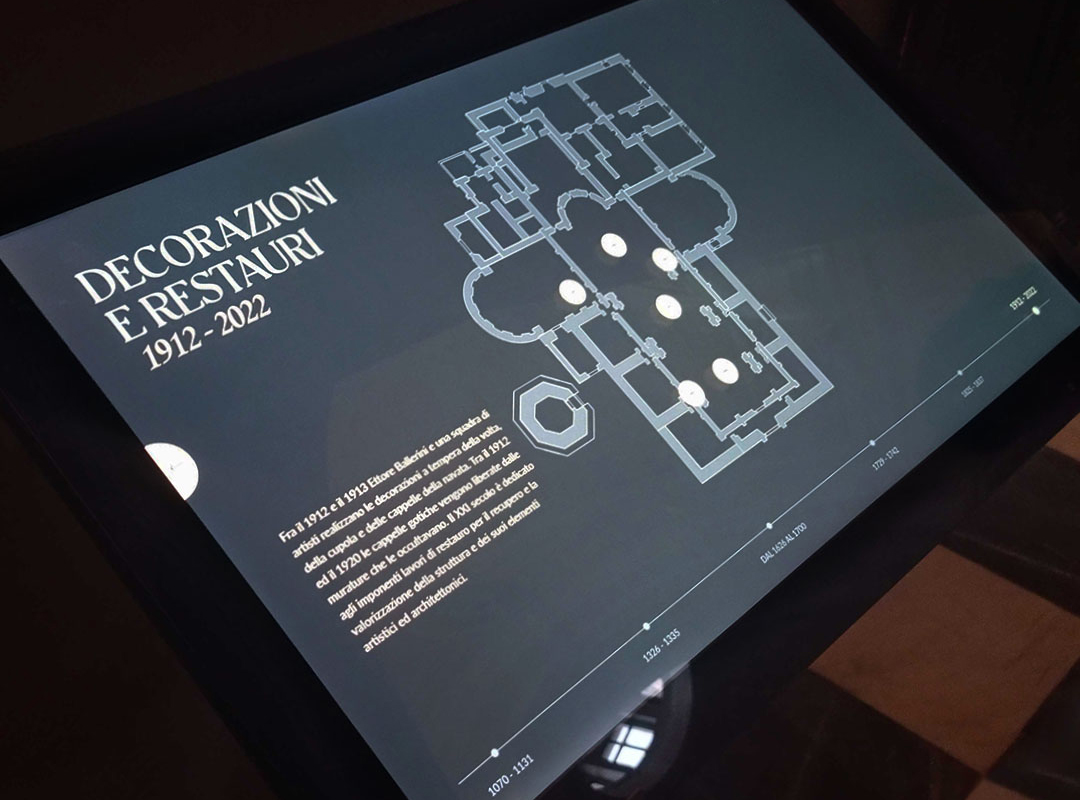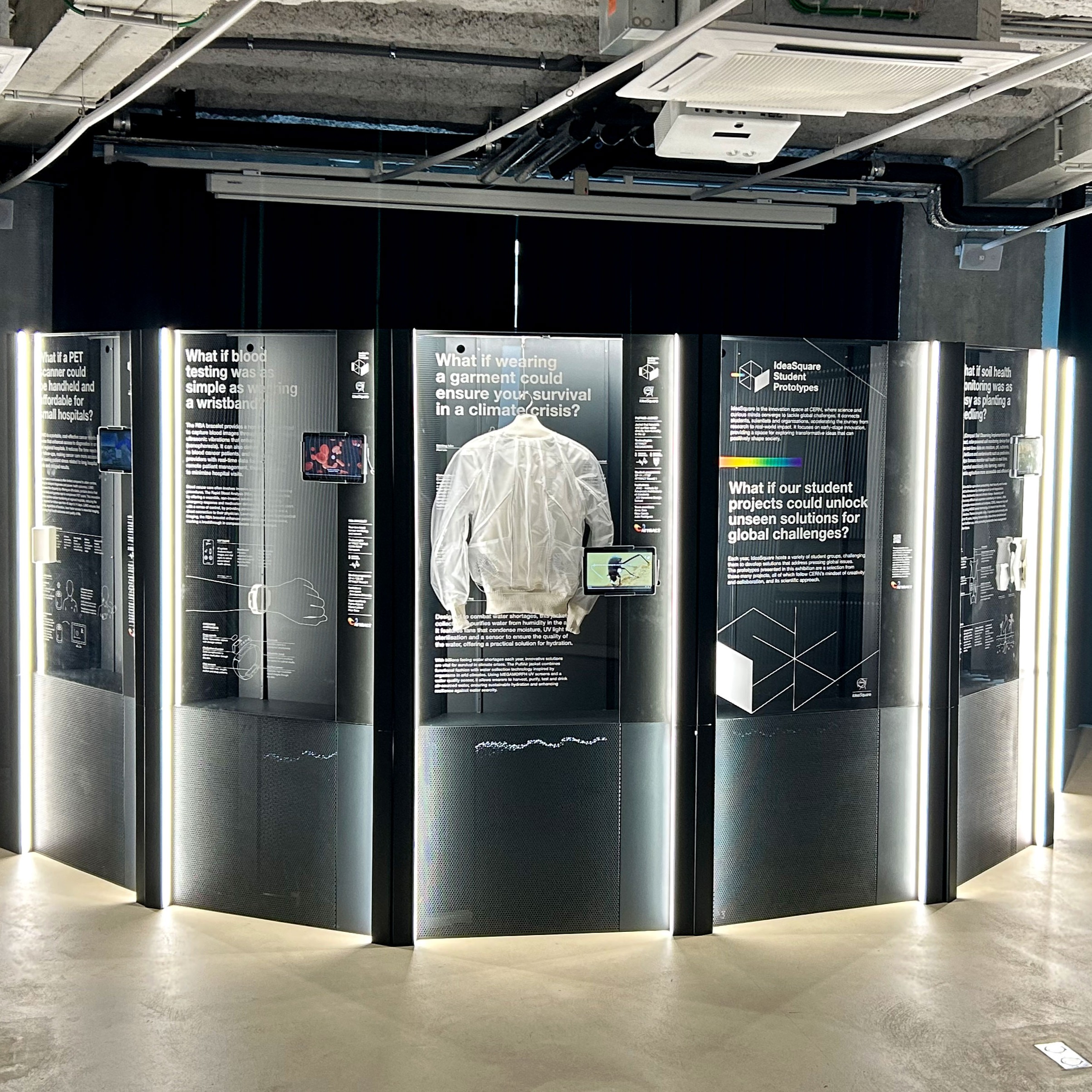“Carcer Tullianum” Exhibition Project
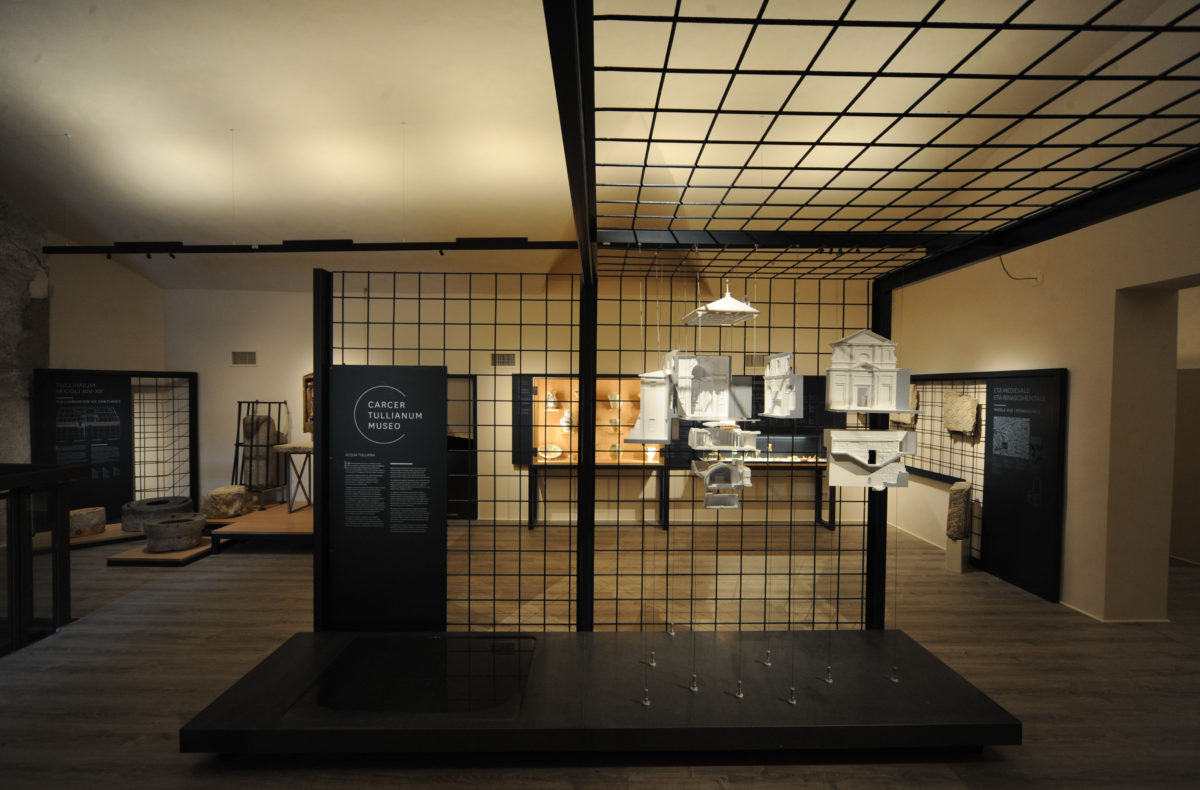
The Carcer Tullianum, also known as the Mamertine Prison, is one of Rome’s hidden treasures. With 3000 years of history, the complex’s opening has enriched the city’s cultural offer and brought direct access to the archaeological area of the Roman Forum and the Colosseum. For the first time, the museum displays all the finds from recent years, including three tombs from the 9th century BC.
In 2016, on the occasion of its inauguration, Visivalab was chosen to accompany the public on its discovery of the monument, putting technology and design to the exhibit’s service. We conceived and curated the museographic design, which ranged from designing the itinerary, lighting and expositive set to its whole graphic identity and content format. In addition, we developed a complementary digital route through a Virtual Reality app and video stations.
CLIENT MiBACT, Diocesi di Roma, Opera romana Pellegrinaggi
PARTNER Lacol Cooperativa
YEAR 2016
FEATURES
- Visual Identity
- Geolocated app
- Virtual Reality / Augmented Reality
- Museographic design
- Exhibition set
- Video storytelling
- 3D printed model
- Smart lighting system
- Alarm and surveillance system
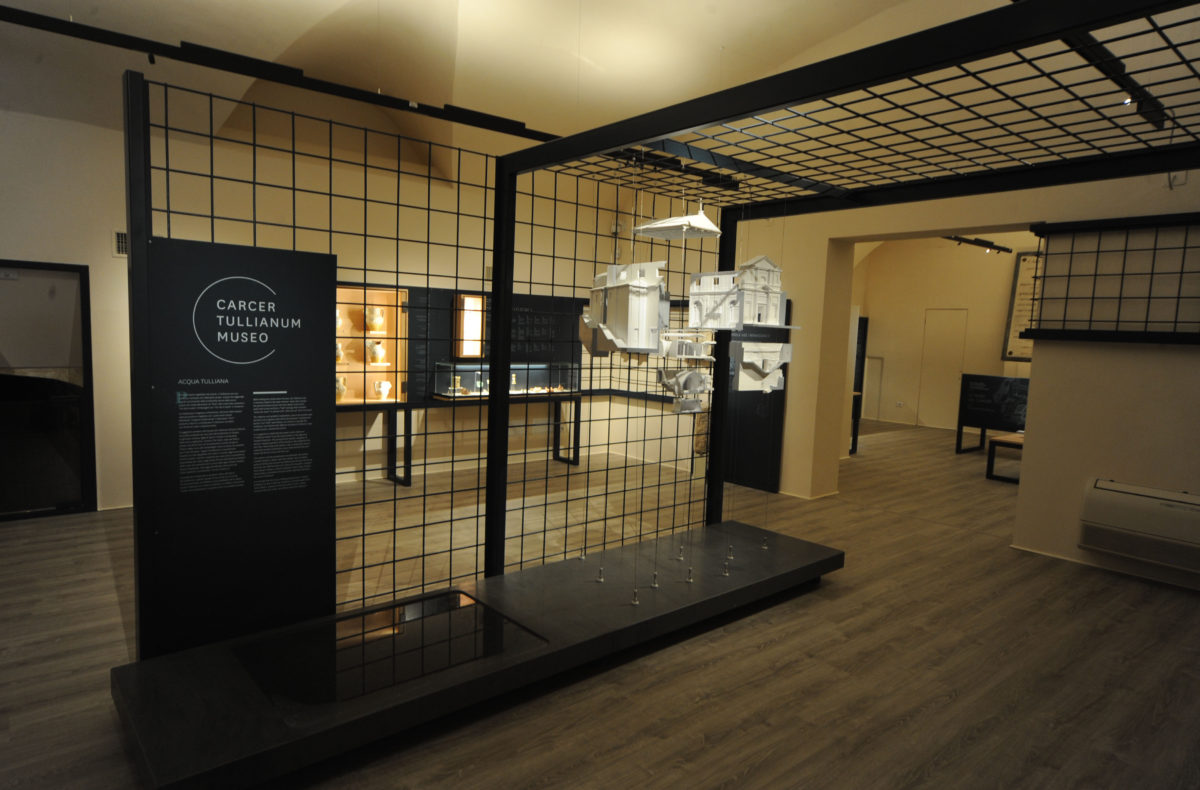
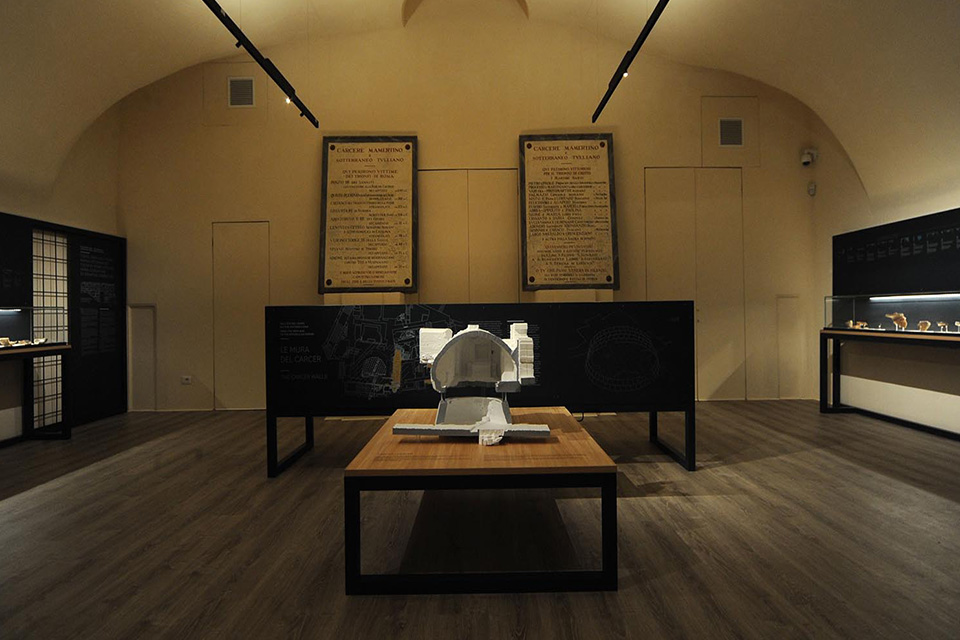
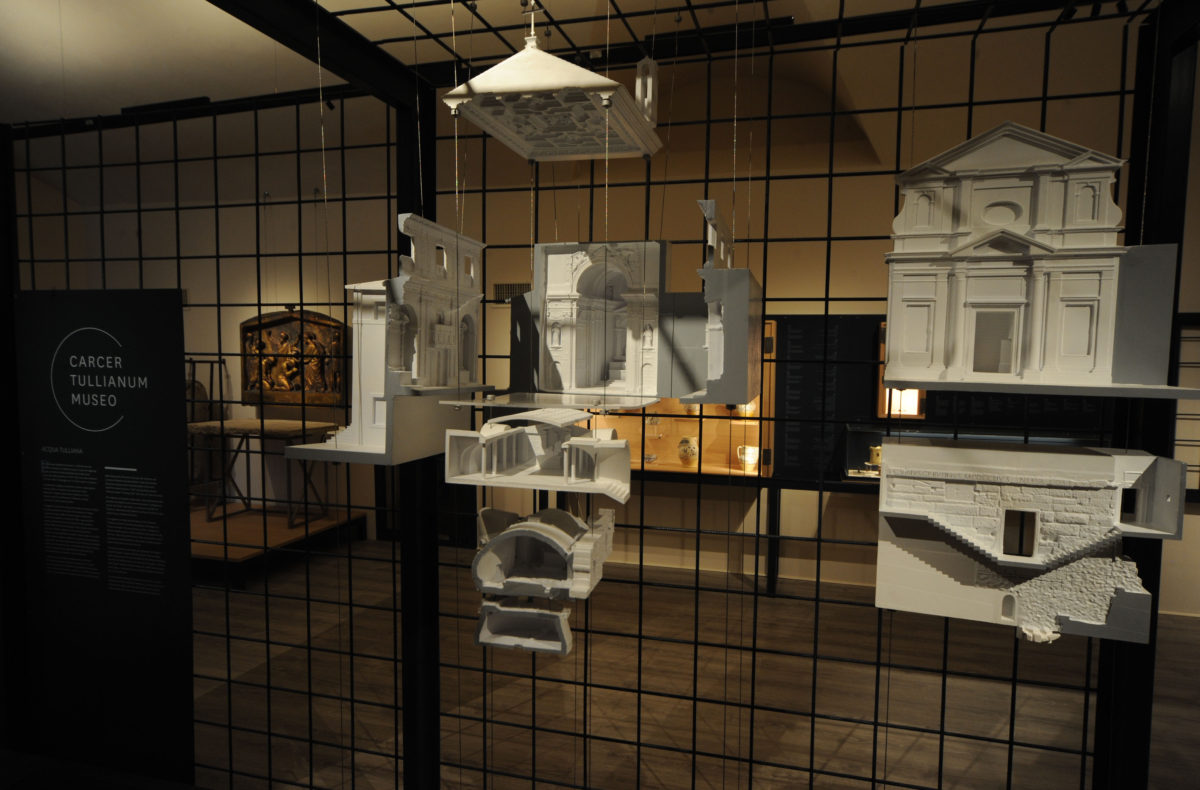
Project
The architectural complex of Carcer Tullianum bore witness to events that span from Rome’s birth (with records dating back to the 9th century BC) until the construction of the Church of San Giuseppe dei Falegnami, consecrated in 1663.
The complex is the result of several interventions over time, which are reflected in a monumental structure: the Marmetine Prison is located on the slopes of the Campidoglio under the Church, and yet below it, you can find the oldest part, the Carcer Tullianum.
The latter was the prison for the enemies of the Roman Republic, who were considered dangerous for Rome and the Empire’s survival. According to Christian tradition, Saint Peter was incarcerated here before his crucifixion, where he baptized his cellmates, who later became martyrs.
VISUAL IDENTITY
We were asked to develop the museum’s graphic identity, for which logo we envisioned a synthesis between the Carcer and the source of water that connects the oldest building with the most recent. Water, particularly its religious facet, becomes the guiding thread of the itinerary.
From this starting point, we built the visual identity using National typeface and a basic color palette (white, black and turquoise blue) that we used on a series of simple and light graphic elements representing the other monument’s main textures: iron and stone.
This identity served to carry out both the museographic project and the communication strategy, online and offline.
ITINERARY AND EXHIBITION DESIGN
The interdisciplinary work of archeologists, architects, designers and programmers resulted in the itinerary proposal, designed to convey a fascinating and flowing narrative based on the rich scientific, historical and archeological documentation. The experience is enhanced by an Augmented Reality application on the tablets the museum provides for the visit.
The experience divides into two differentiated parts: the visits to the museum and the prison, with water being the common thread that unifies the whole itinerary.
We chose the exhibit materials and lighting design in order to constitute a holistic experience that evokes the building’s role as a prison. We completed the proposal with a series of supports distributed throughout the rooms, such as exhibitors, graphic panels, video stations and showcases with findings and fact sheets based on scientific studies.
At the beginning of the tour, we focus the visitor’s attention on a 3D printed model which seeks a proper understanding of the evolution of the monument over time. It is a deconstructed reproduction of the architectural complex that displays its archaeological stages from the archaic period to the Early Middle Ages.
In the first part of the visit, the AR app we developed only serves to maximize some of the points of interest, but it’s inside the Carcer where it reaches its full potential and becomes the key element for interpreting the different spaces.
GEOLOCATED APPLICATION
The visit continues with a guided tour of the prison. This part’s content is activated through geolocation when the visitor approaches the different points of interest. Then, access to the information is granted by Augmented Reality when hovering the camera over items. Thanks to this technology, we provide visitors with a whole “material” experience of the monument without physically interacting with it.
Also, the 2010 restoration works unveiled the rich frescoes that ornament the tuff walls, which were almost hidden by dust and plaster. Technicians and restorers identified the frescoes’ chronological stratigraphy, with which they created a virtual restoration that is available in the app in high-definition images.
Developed in Italian and English, the application offers personalized content depending on the type of audience, whether they are adults or children.
It also works as a timer for the duration of the visit, which is an added value for the museum’s staff since it allows them to supervise and manage the flow of public and control the security systems of the exhibition. In particular, the app allows:
- Control the number of visitors in real-time;
- Estimate the waiting time of people and plan their itinerary;
- Communicate with visitors;
- Safeguard exposed spaces and materials.
In addition, the app delivers satisfaction surveys and collects anonymous statistics useful for updating the exhibit, which allows identifying the user’s preferences and the content and activities that have aroused the greatest interest.
TECHNICAL INFORMATION
SOFTWARE
- CloudCompare
- Meshlab
- Scene
- 3D Studio Max
- After Effects
HARDWARE
- Door-mounted contact alarm sensor
- RDV alarm sensor
- Video surveillance camera
- Network alarm server
VIDEO STATIONS AND STORYTELLING
The visit is enhanced with storytelling videos, which support the interpretation of the Carcer in a meaningful way. Inside the museum, we installed three video stations:
- an introductory video located at the entrance of the museum, which portrays the monument’s evolution and different stages;
- another dedicated to the votive stipe found below the pavement of the Carcer, the most important one found in Europe to date;
- the last video talks about the three skeletons found during the latest excavations and the studies they were subjected to, such as isotopic, genetic, anthropological and paleo nutritional analysis.
HERITAGE DIGITALIZATION – 360 HD IMAGES
Between 2012 and 2014, Visivalab developed a system for studying and disseminating artifacts and scientific research related to the Carcer and its artistic elements. The project included the creation of a website and the publishing of a book.
We carried out a 3D exploration of the architectural complex, combining 360º panoramics with high-definition images of its surroundings and different parts, which allows remote users to explore the monument in detail and accurately identify its materials and state of conservation.
TECHNICAL INFORMATION
SOFTWARE
- CloudCompare
- Meshlab
- Scene
- 3D Studio Max
- After Effects
HARDWARE
- Door-mounted contact alarm sensor
- RDV alarm sensor
- Video surveillance camera
- Network alarm server
PRESS
Riapre il sitio archeologico
del Carcer Tullianum
LA STAMPA
La Cárcel Mamertina de Roma reabre
y da un nuevo acceso a los Foros Romanos
LA VANGUARDIA
La Carcer Mamertina de Roma ha sido reabierta al público
HISTORIA NATIONAL GEOGRAPHIC

